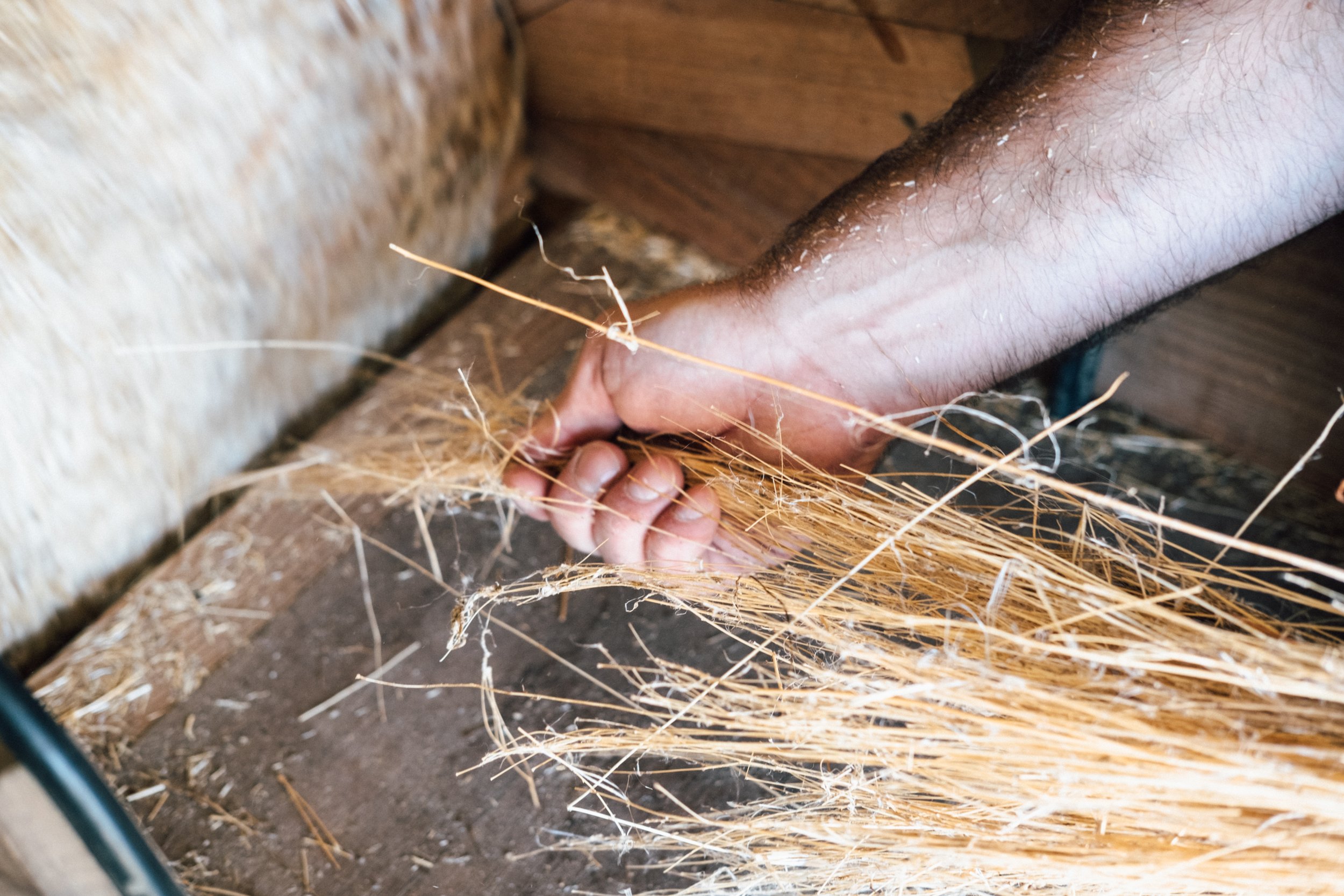We've all heard of linen, but what about tow?
Do you know what the differences are?
In the textile world, richness lies in the details, and a crucial factor in determining a fabric's quality is the fibre's composition. In the case of linen, the versatile fibre extracted from the flax plant (Linum usitatissimum), the essential difference between its distinct types lies in the quality and length of the fibres.
Immediately after the scutching process, which skilfully separates the linen fibres from the straw of the stem, comes the crucial step of heckling. This process, akin to meticulous combing, not only aligns the fibres but also distinguishes the longest from the shortest. At this critical moment, all the plant's fibres are separated into two distinct categories: Linen and Tow.
Each type carries its characteristics, providing varied and unique possibilities in the textile industry
You already have heard of linen, but what about Tow? Do you know the difference?
Linen
Linen, noble and refined, is the epitome of linen fibre. Composed of the finest and longest fibres extracted from the flax plant, this fabric is known for its elegance, fluidity, and soft touch. Its porous structure gives linen an exceptional ability to absorb and release moisture, making it a popular choice for summer clothing, providing comfort even on scorching days. Despite its delicate appearance, linen surprises with its strength and durability, able to withstand the test of time with proper care.
Tow
Tow, made up of the shorter and more robust fibres, embodies strength and sturdiness. As a result of the remaining fibres after the scutching process, this fabric has a rough texture and remarkable durability. It is often employed in tasks requiring resilience, such as industrial cleaning, surface polishing, and even manual and artisanal work. Its unique composition makes it a practical and versatile choice for various applications.
How can I tell them apart?
Distinguishing between different types of fabrics like the one made of linen and tow involves a multi-faceted approach that encompasses visual and tactile tests.
Starting with a visual examination, linen, a natural fibre derived from the flax plant, typically boasts a smooth and lustrous surface. Its colour palette spans from creamy white to light tan or shades of grey.
Tow, on the other hand, has a rougher texture and often results in a more uneven appearance compared to its linen counterpart.
Moving on to the tactile examination, linen is known for its smooth, cool feel with a distinctive crispness. When handled, it exudes an air of refinement and elegance. Tow, in contrast, presents a rougher texture and lacks the smoothness associated with linen. Its coarser nature can be readily discerned through touch, evoking a sense of ruggedness.
This tactile experience is often a key indicator of the fabric's origin and composition.
Each variant of linen possesses a unique personality and is skilfully adapted to meet a wide range of needs and preferences. By understanding the distinctive characteristics of each, we gain a deeper appreciation for the richness and versatility of linen fibre.




